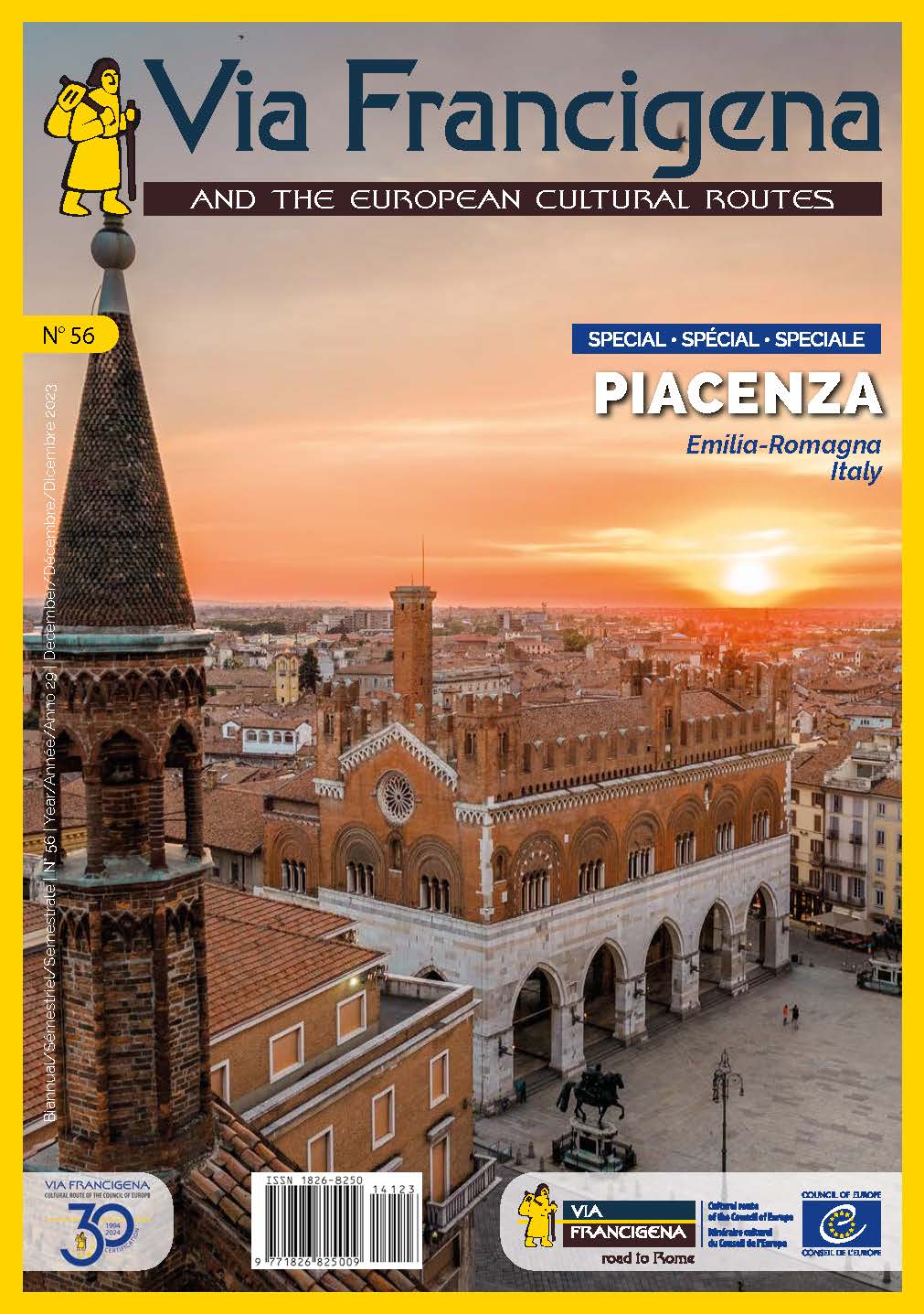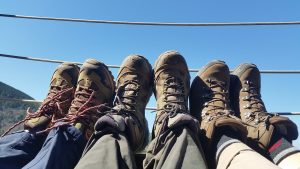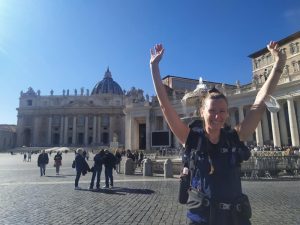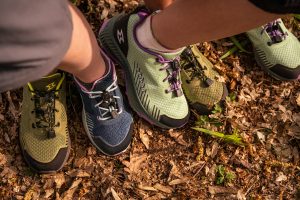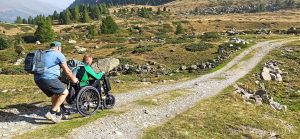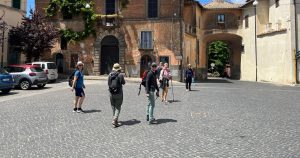In every season, mountains offer unique wintery landscapes. During the winter season in particular, the mountains can be a good option for hiking at high altitudes. Although many will associate the high peaks with skiing or snowboarding as the only possible outdoor activity during the harshest times of the year, fans of walking and hiking at high altitude will definitely disagree.
The magic of the mountains
The German writer Goethe said that “the mountains are silent teachers that make silent disciples“. This means that the mountain is a silent teacher of life, but if we learn to listen to it, we can grasp its magic all the time. In spring and summer with its bright, warm colours and melodies of nature in turmoil; in winter with its slopes covered in a thick blanket of snow and the silence of nature at rest.
The mountains offer opportunities for all walkers, whether in company or alone. It allows you to take back lost time and to breathe deeply. Each moment of silence enriches our lives a little further. But how do you prepare for all this magic?

5 tips for hiking at high altitude
1. Follow expert guides
Not everyone who undertakes a high-altitude hike is a mountain expert. If you are not, your best bet is to join a group of mountain veterans who know more than you and who know the joys and sorrows of the mountains. It is always recommended that you start your hikes with a more experienced friend or guide, who can not only accompany you, but also advise you so that subsequently you can start hiking on your own.

2. Inform yourself about the type of route
It is essential to gather detailed information about the itinerary before setting off. Every walk has its own characteristics and contingencies, so it must be planned down to the last detail as well as physical preparation.
The moment you leave flat terrain, the altitude difference increases. This is why it is important to know the geography of the terrain, the resting places and to be aware of your physical capacity compared to the difficulty of the walk. For tips on physical preparation, make sure to read this article on how to train for a pilgrimage. Remember, however, not to overexert yourself. Especially at the beginning of the climb you will feel fatigued and your pace will not be the same as when walking at sea level. The first signs you’ll notice will be your increasing heart rate and a more profound breathing. This is a reflex of your body reacting to the reduction of oxygen at high altitude. We therefore advise you to take long breaks and spread the hike over several days to help your body get used to the altitude little by little. An underestimated aspect is “acclimatisation”, i.e. ascending in altitude gradually to allow your body to adapt to the change in pressure. Otherwise, the consequences of a sudden change in pressure could play havoc with you. Altitude sickness usually manifests itself with nausea, dizziness, severe headaches, lack of appetite and insomnia. In fact, we suggest you spend the night in a base camp or shelter and allow your body to read every three days.
3. Technical clothing
Proper clothing includes suitable shoes, jacket and backpack, because remember: there is no such thing as bad weather, there is only bad equipment.
Prepare a large backpack with:
- first aid kit (including an isothermal blanket, i.e. a cloth that helps stabilise normal body temperature)
- spare clothing
- a shirt made from technical fabric, such as those offered by our partner CAMCO, in extra-fine organic merino wool
- tights to wear under your technical trousers in case of excessive cold
- thick gloves and a neck warmer. Hands, feet and neck must always remain warm, as well as your chest (legs are less important, they are said to be “without a soul”)
The main advice, however, remains to dress in layers and to use sunscreen 50 together with lip balm. At high altitude, exposure to sunlight also increases!

4. Equipment
There are several other useful tips for those approaching medium or high mountains concerning equipment:
- Good water supply, at least 1 litre, and especially a thermal water bottle to keep your water liquid (temperatures below 0 will play tricks on you)
- Sugar supply (also for emergency), along with fats and proteins
- Compass and paper map (in the mountains there is often no signal)
- Radio and whistle
- Backpack or jacket with GPS signal: in the Ferrino catalogue you will find many models suitable for you
Finally, it is useful to calculate the time of the route based on: bearing time, possible hiccups, weather, difference in speed due to altitude difference and walking in a group, in two or solo.
5. Signposting
- Do not leave the marked paths. You are advised to follow the signs along the route to orient yourself and not to take shortcuts or alternative routes, particularly if you are a novice hiker with little knowledge of the mountains.
- There are two types of signs: vertical and horizontal. The first relates to the physical signs that contain information on the name of the place and the destinations in the vicinity, the number of the path and the kilometres to reach it. The second is found on red and white stones that indicate to walkers that they are following a viable path.
- There are also the so-called “stone cairns“, small mountains of stones, of different sizes, placed one on top of the other built by other hikers to mark the end of a route, especially at the top of a mountain or to indicate the course of the trail.


Hiking at high altitude: the highest points of the Via Francigena
Despite the unexpected, it’s not every day that you get to admire breathtaking landscapes and views from above. Would you like to know which are the highest points of the Via Francigena?
If you are thinking of the Alps, the Great St. Bernard Pass cannot be missing from your travel list. The route to the Pass is 2000 years old as well as being the highest point of the Via Francigena. It was here that Napoleon rested with his army before embarking on his second campaign to conquer Italy. It is no coincidence that the painter Jacques David depicted it in a painting, immortalising the leader and his white horse right along the Pass.
👉🏻 Read also: 8 tips for crossing the Great St. Bernard Pass in winter

Moving on towards the border between France and Switzerland, we recommend exploring the Jura mountain range of limestone origin that connects the town of Pontarlier to Jougne. The name Jura comes from the Roman word Juris, used to indicate woods and forests. A name with the power to anticipate the landscape before you even see it.
If, on the other hand, you have not considered the Swiss-French section when travelling the Via Francigena towards Italy, you can take the path leading to the Monginevro Pass. Here you enter Val di Susa, in Piedmont, where 914 kilometres separate you from the city Rome. Alternatively, you can cross the Alps at the Moncenisio Pass. Here, a centuries-old road will take you first to the Alpine village of Moncenisio and then down into the valley to discover the cultural and historical heritage of the ancient Benedictine abbey of Novalesa.

Along the route near the Montginevro Pass, you can be enchanted by the San Gervasio Gorges, a path between Cesana and Claviere where the Dora Piccola stream flows. And if you are a daredevil, you can indulge in the itinerary of the Claviere Tibetan Bridge. It is one of the longest tibetan bridges in the world: 544 metres long and 30 metres high above sea level. The Tibetan Bridge, however, cannot be crossed in winter.
William Blake said that “when men and mountains meet, great things happen”. Don’t miss the opportunity to discover the mountains and yourself on the way. Grab your backpack and start your next high-altitude hike!







